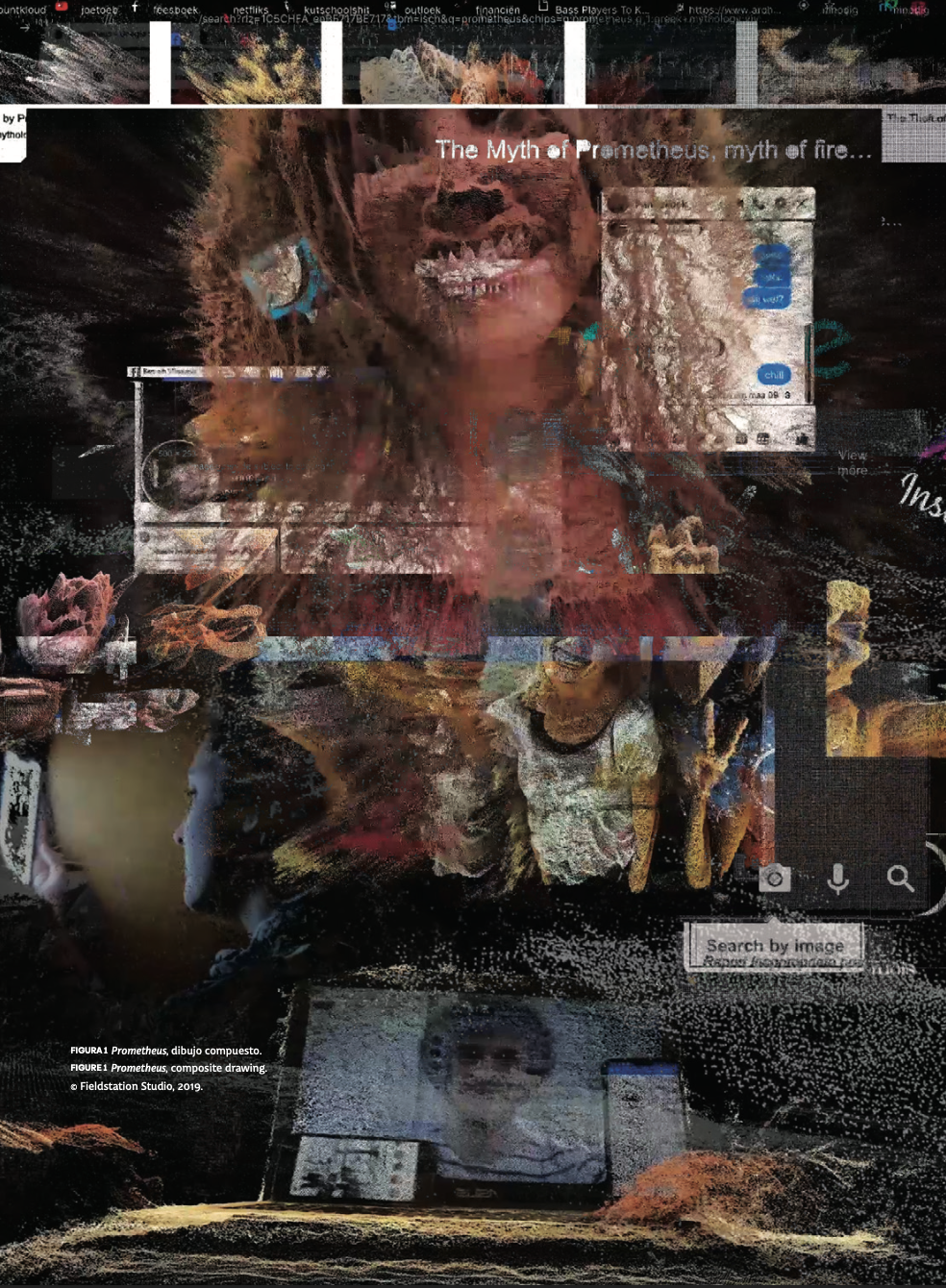Mundos de diseño entrelazados: transformaciones en los medios arquitectónicos
Barra lateral del artículo

Palabras clave:
Contenido principal del artículo
Resumen
La introducción de herramientas de diseño computacional en la práctica arquitectónica está transformando la forma en que operan los medios de diseño arquitectónico: estos se han vuelto dinámicos e interactivos, introduciendo además la temporalidad. Dichos cambios son evidentes no solo en el medio en sí, en los datos y procesos habilitados a través de la computación, sino también en la forma en que los medios se relacionan con los objetos, los espacios y los fenómenos simulados, así como con los sistemas materiales, ecológicos y sociales más amplios en los que estos medios están integrados. A partir de tres proyectos desarrollados en Fieldstation Studio, este artículo expande la noción de mundos de diseño, proponiendo el cine computacional como una herramienta crítica para que los arquitectos se involucren en las complejidades de nuestros entornos contemporáneos saturados de tecnología.
Detalles del artículo

Esta obra está bajo una licencia internacional Creative Commons Atribución-NoComercial 4.0.
Materia Arquitectura proporciona acceso inmediato y gratuito a todos los contenidos de esta edición electrónica, publicada simultáneamente con la edición impresa. Materia Arquitectura no cobra honorarios a los autores por ningún concepto.
Todos los contenidos de esta edición electrónica se distribuyen bajo licencia Creative Commons de “Atribución-Copartirigual 4.0 Internacional” (CC-BY-SA).
La licencia Creative Commons permite el acceso libre e inmediato al contenido y permite que cualquier usuario lea, descargue, copie, distribuya, imprima, busque o genere enlaces a los textos completos de los artículos, permitiendo también que estos puedan ser rastreados para indexarlos, pasarlos como datos a software o usarlos para cualquier otro propósito legal. Asimismo, la licencia otorga derechos de uso a quienes a su vez utilicen una licencia abierta (Creative Commons o equivalente).
Los derechos de los textos y las imágenes publicadas pertenecen a sus autores, quienes otorgan a Materia Arquitectura la licencia para su uso. La gestión de los permisos y la autorización de publicación de las imágenes (o de cualquier material) que contenga derechos de autor y sus consecuentes derechos de reproducción en esta publicación es de exclusiva responsabilidad de los autores de los artículos.
Toda vez que mencionen su origen, los autores son libres de distribuir sus artículos por otros medios. Cualquier reproducción total o parcial del material deberá citar su procedencia.
Descargas
Citas
Bollmer, G. (2019). Materialist Media Theory: An Introduction. Bloomsbury Academic.
Cardoso Llach, D. (2015). Builders of the Vision: Software and the Imagination of Design. Routledge.
Cinque, T. (2024). Emerging Digital Media Ecologies: The Concept of Medialogy (1st ed.). Routledge. https://doi.org/10.4324/9781003178149
Coates, P. (2010). Programming.Architecture (1st ed.). Routledge.
Eames, C., & Eames, R. (1977). Powers of Ten and the Relative Size of Things in the Universe. Eames Office. https://www.eamesoffice.com/the-work/powers-of-ten/
Ferguson, K. L. (2015). Volumetric Cinema. [In]Transition, 2(1). https://doi.org/10.16995/intransition.11331
Frascari, M., Hale, J., & Starkey, B. (2007). From Models to Drawings: Imagination and Representation in Architecture (1st ed.). Routledge.
Fuller, M. (2007). Media Ecologies: Materialist Energies in Art and Technoculture (1st ed.). MIT Press.
Gänshirt, C. (2003). Tools for Ideas (1st ed.). Birkhäuser Architecture.
Ivsic, L., Rajcic, N., McCormack, J., & Dziekan, V. (2021). The Art of Point Clouds: 3D LiDAR Scanning and Photogrammetry in Science & Art. 10th International Conference on Digital and Interactive Arts, 1–8. https://doi.org/10.1145/3483529.3483702
Jaque, A. & Office for Political Innovation. (2020). Superpowers of Scale (J. Graham, Ed.). Columbia University.
Kudless, A., & Marcus, A. (2024). Drawing Codes: Experimental Protocols of Architectural Representation (1st ed.). AR+D Publishing.
López, A., Ivakhiv, A. J., Rust, S., Tola, M., Chang, A. Y., & Chu, K. (Eds.). (2024). The Routledge Handbook of Ecomedia Studies. Taylor & Francis.
Martínez-Cano, F.-J. (2021). Volumetric Filmmaking, New Mediums and Formats for Digital Audiovisual Storytelling. Avanca | Cinema. https://doi.org/10.37390/avancacinema.2020.a168
Mattern, S. (2016). Cloud and Field. Places Journal. https://doi.org/10.22269/160802
McLuhan, M. (2001). Understanding Media: The Extensions of Man. Routledge.
Mitchell, W. J. (1990). The Logic of Architecture: Design, Computation, and Cognition. MIT Press.
Postman, N. (1993). Technopoly: The Surrender of Culture to Technology. Vintage Books.
Román, M. O., Wang, Z., Sun, Q., Kalb, V., Miller, S. D., Molthan, A., Schultz, L., Bell, J., Stokes, E. C., Pandey, B., Seto, K. C., Hall, D., Oda, T., Wolfe, R. E., Lin, G., Golpayegani, N., Devadiga, S., Davidson, C., Sarkar, S., … Masuoka, E. J. (2018). NASA’s Black Marble Nighttime Lights Product Suite. Remote Sensing of Environment, 210, 113–143. https://doi.org/10.1016/j.rse.2018.03.017
Rudnick, D. (Director). (2017, August 14). David Rudnick. Lecture “Crisis of Graphic Practices: Challenges of the Next Decades” [Video recording]. https://www.youtube.com/watch?v=-ejp4AvetSA
Scheer, D. R. (2014). The Death of Drawing: Architecture in the Age of Simulation. Routledge.
Sheppard, S. R. J., & Cizek, P. (2009). The Ethics of Google Earth: Crossing Thresholds from Spatial Data to Landscape Visualisation. Journal of Environmental Management, 90(6), 2102–2117. https://doi.org/10.1016/j.jenvman.2007.09.012
Taffel, S. (2019). Digital Media Ecologies: Entanglements of Content, Code and Hardware. Bloomsbury Academic.